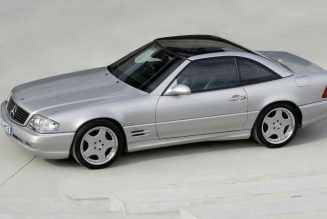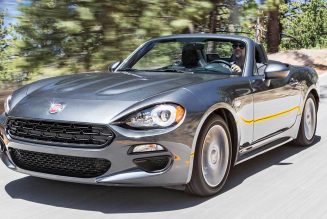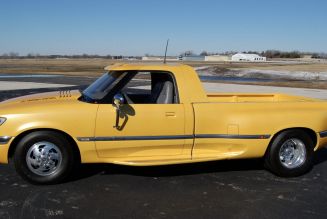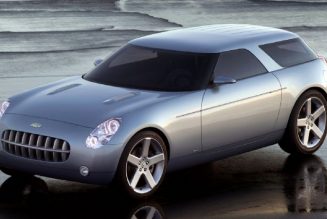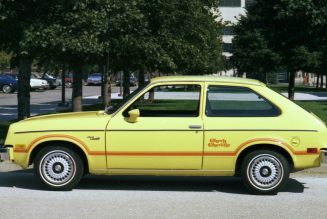How bad does your car have to be before it attracts a lawsuit from the U.S. Department of Justice? Welcome to the story of General Motors‘ X-body project, started in the late 1970s as a response to the onslaught of front-wheel-drive imports that were making inroads thanks to a combination of affordability, reliability, and high fuel economy.
Initially, there was a lot of internal excitement at America’s largest automaker for what promised to be the light that would lead GM into the future. Yet right from their 1979 on-sale date, and all the way through their ignominious retreat from the market by the middle of the next decade, GM’s X-car family provided a master class in how not to engineer, build, or handle defects for brand-new automobiles. This was the peak of the General’s reach overextending its grasp as it tried to remain relevant among a rapidly changing landscape by packaging technologies it hadn’t mastered as cheaply as possible in cars it rushed to market.
Too Many Cooks
Although Cadillac and Oldsmobile had experimented with front-wheel drive in the past, it had always been in the context of enormous luxo-barges featuring traditional longitudinal engines. The edict from the top brass that kickstarted the X-car project was to create a unibody platform that could accept transverse, small-displacement engines and offer substantial improvements in fuel economy, cabin space, and assembly costs. It was square-one for General Motors, and inspiration came from an unlikely source: front-wheel-drive Lancias that were purchased and dissected to provide clues as to how the X platform should unfold.
Pressure was intense to get the X-cars—which would be given to the Chevrolet (Citation), Oldsmobile (Omega), Buick (Skylark), and Pontiac (Phoenix) divisions—into showrooms as quickly as possible. This meant not only a significantly shortened development cycle, where testing of the radically new chassis and drivetrain setup was given the shortest possible shrift, but also a centralized engineering approach where each division would be expected to play nice and contribute to specific aspects of the project.
Forward-thinking, at least at first blush. The realities of pulling together a car where Pontiac was responsible for the rear suspension and Chevrolet the front were something else entirely. Rather than a vehicle that functioned as a complete system, the hodgepodge of ideas and executions would contribute to its sensational fall from grace.
It Can’t Get Much Worse . . .
Initially, the 1980-model-year X-body was a smashing success. More than 800,000 examples of the Chevrolet Citation alone would be sold during that heady early period. This was bolstered by enthusiastic reviews from the motoring press, who had been provided with a selection of hand-assembled, near-perfect non-production-spec models to test. Still, it quickly became apparent that the vehicle’s sales figures represented a pyrrhic victory at best. General Motors soon would be at odds not just with its own customers, but also the U.S. government.
Problems began to mount almost immediately. Rust was a problem on every X-car, often scarring models before the second year of ownership even began. Interior trim regularly declared freedom from adhesive, bolts, and clips and tumbled to the floor. The suspension mounts were soft as gelatin, transmissions gave up the ghost frighteningly often, and the Iron Duke four-banger under the hood shook and rattled with each stab of the accelerator. Even before the car made it out of the factory for the first time, GM had been forced into a host of last-minute changes and updates to the platform, including fixing rear suspension welds that weren’t up to spec.
. . . Until It Does
It was the X-body’s brakes, however, that would prove the biggest bugaboo. Complaints poured in to both General Motors and NHTSA that every version of the X car had the frightening tendency to lock its rear wheels during heavy braking, leading to reports of accidents, injuries, and even fatalities.
The federal body began to pressure GM to issue a recall, but it was met with firm resistance. Eventually, a tiny sliver of the million or so cars that had been sold—47,731 of the early manual-transmission cars—were made part of a largely secret, and entirely voluntary recall program to adjust their brake proportioning valves. Contemporary reports indicate this did little to stem the rising tide of frightened owners who reported spinning their Citations and Skylarks, with even ‘repaired’ X-cars still displaying the same willingness to swap ends during emergency stops.
Again, General Motors demurred, refusing to address the brake-drum assembly as a whole and instead issuing a second voluntary recall in 1983 of approximately 240,000 cars from early X-body production. By now complaints numbered in the thousands, and this was the final straw for the NHTSA, which moved through the U.S. Justice Department to file a lawsuit against the auto giant and force a complete recall of the 1980-model-year cars. It was a contentious and ugly spat between the industry and one of the government agencies intended to oversee it, and it did no end of damage to the X-body’s public image and indeed GM itself.
The Bitter End
General Motors would eventually succeed in having the NHTSA lawsuit dismissed in 1987, but by then it was far too late to save any aspect of the X-platform project. Sales for the Citation, for example, would drop from their 800,000-unit 1980 peak to less than 100,000 by 1983, and nearly halve again two years later despite Chevy’s rebranding the vehicle by adding ‘II’ to its name.
GM would milk a little extra cash out of the X platform by revamping it for the mid-size segment and branding it the A-body, a family of cars that would include the lamentable Chevrolet Celebrity and the Pontiac 6000. Somewhat more reliable than their Citation and Phoenix predecessors, they provided a stark reminder that GM simply didn’t have—or foster—the engineering expertise required to rapidly innovate new-to-the-company concepts during that period. The short-term sales success of the Citation, Omega, Phoenix, and Skylark would in no way mitigate their role in the sharpest decrease in American market share General Motors would ever experience as the rest of the ’80s rolled on. And now that the company has for the most part learned how to craft good compact cars, the market has moved on to trucks and SUVs—thankfully for GM, one of its longtime specialties.


